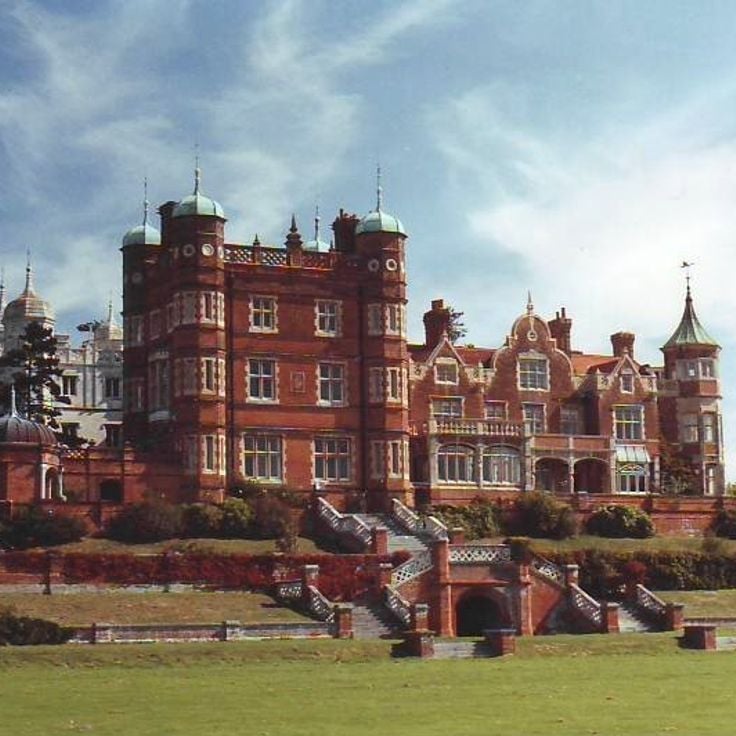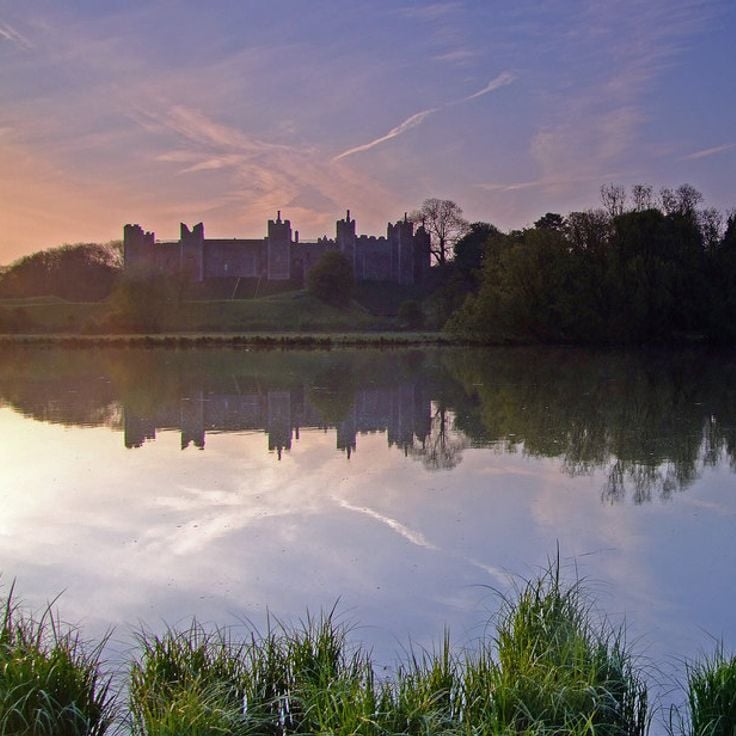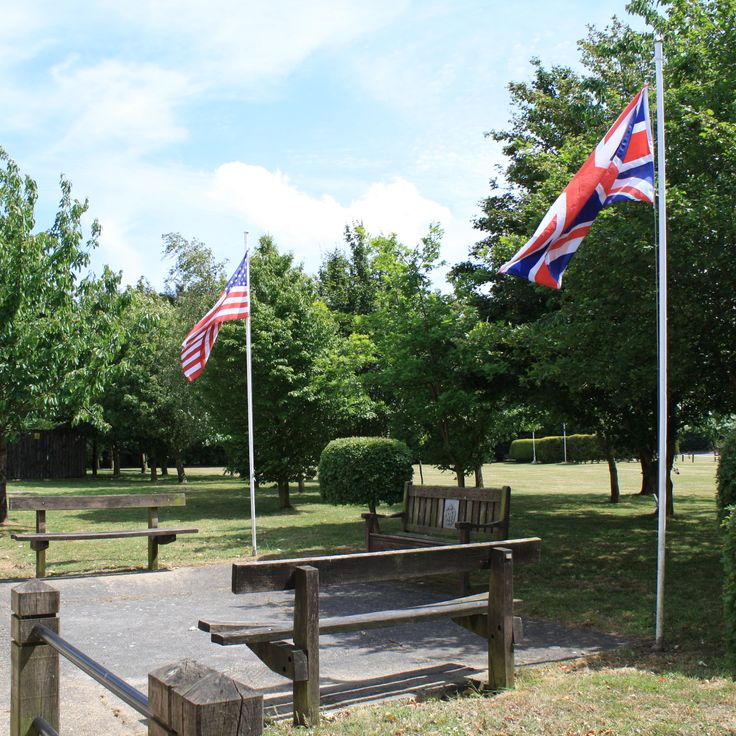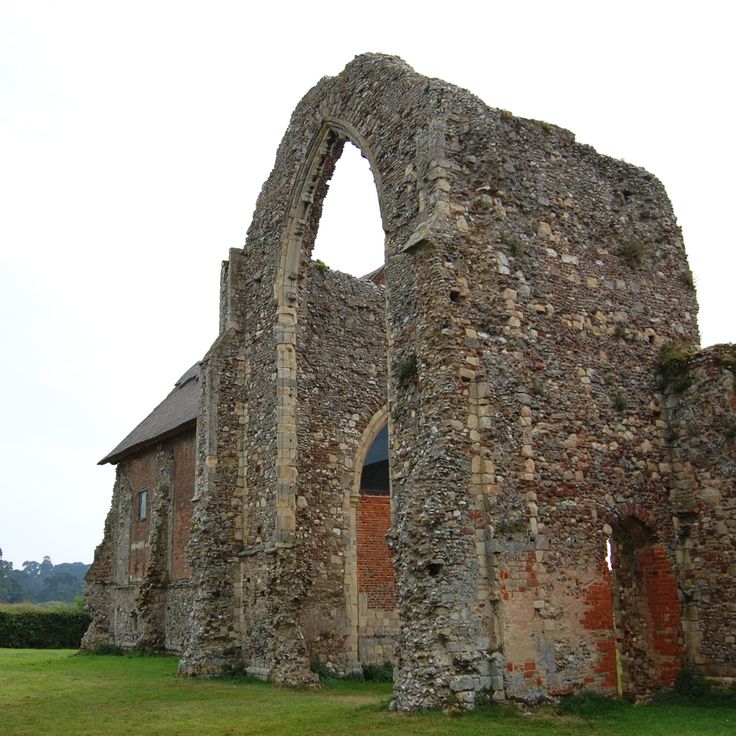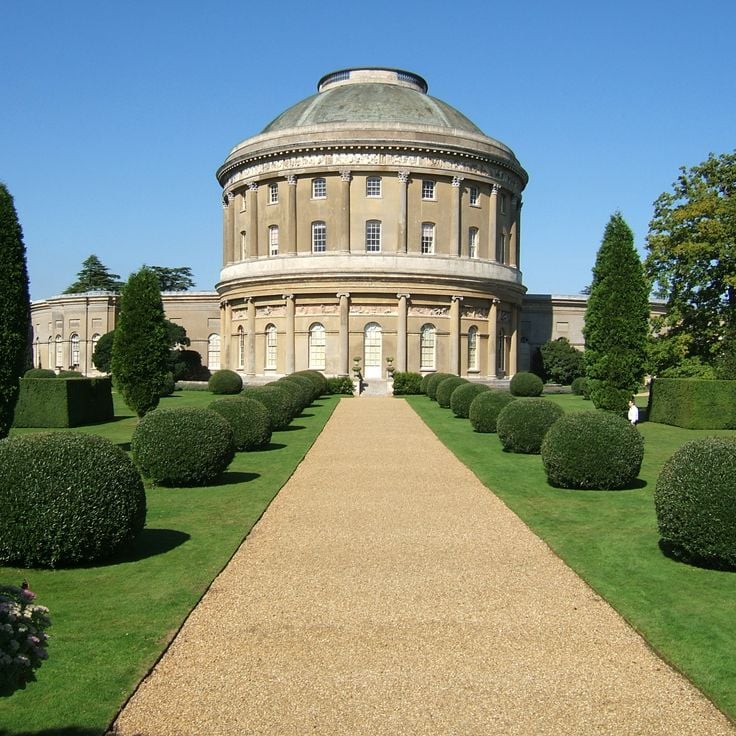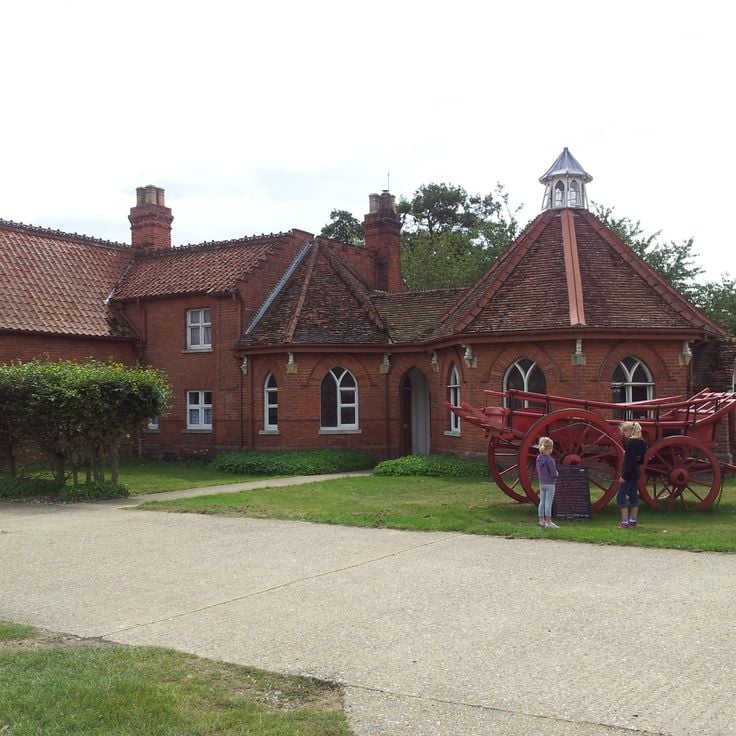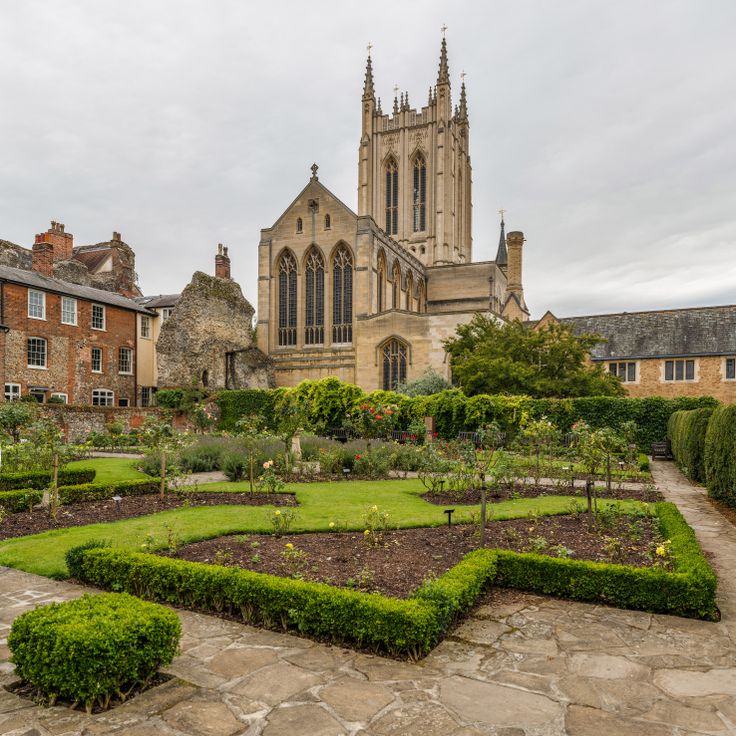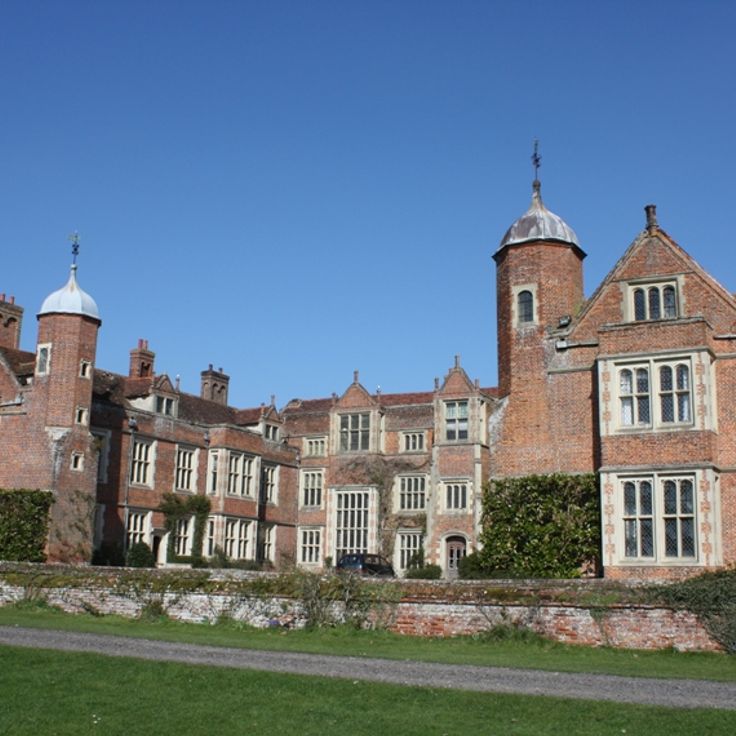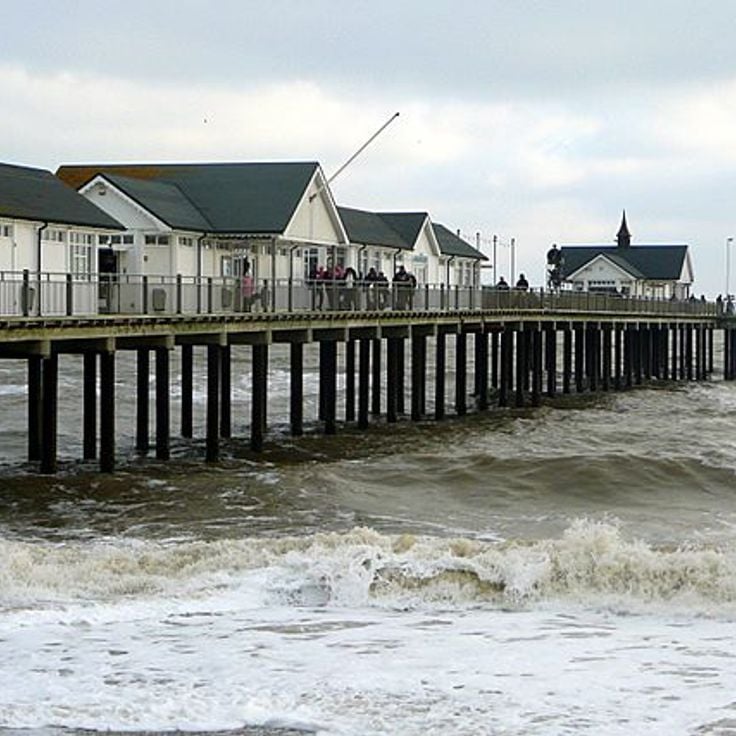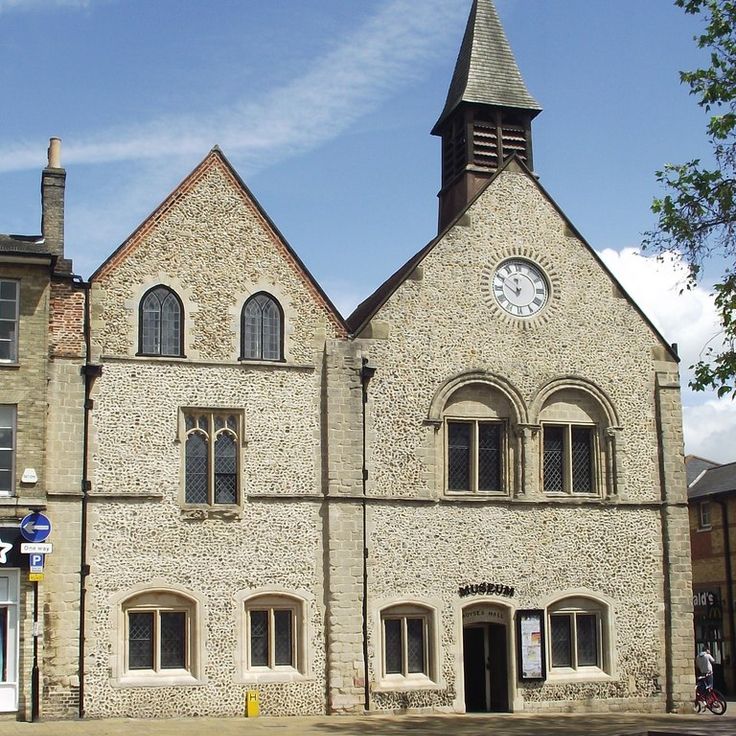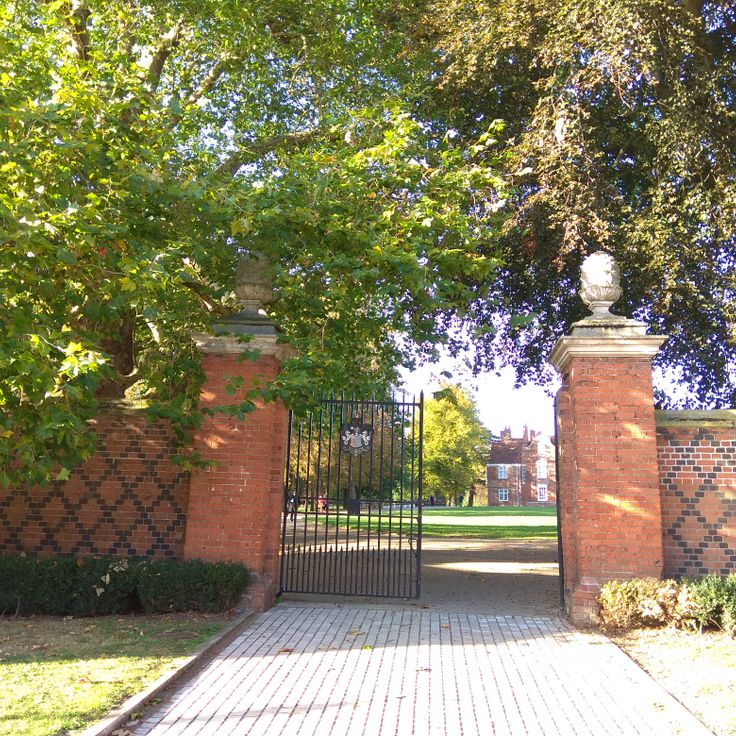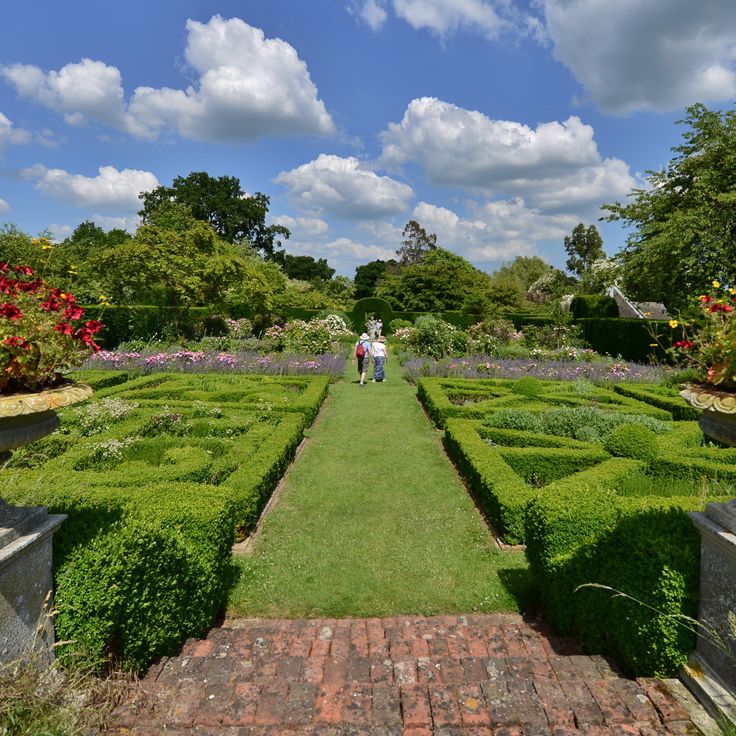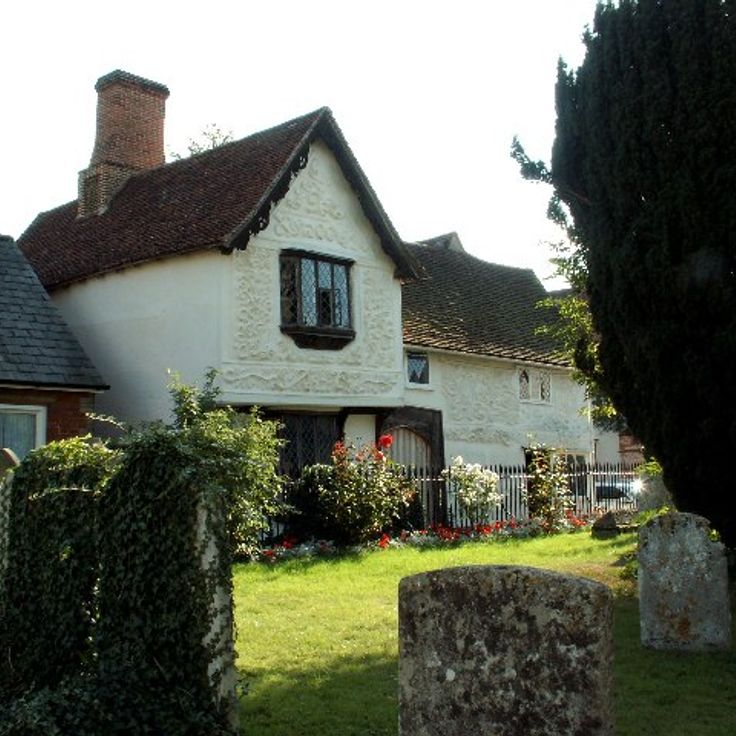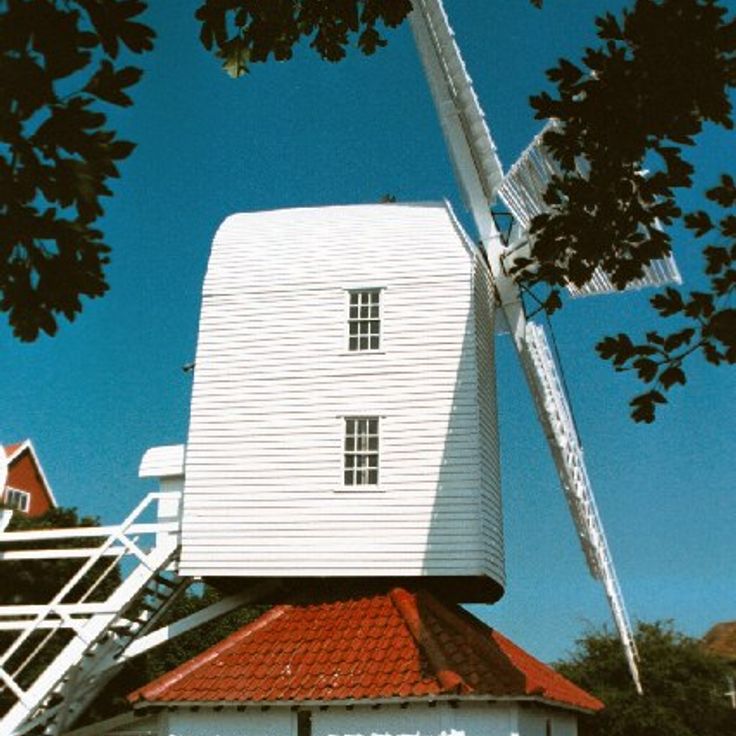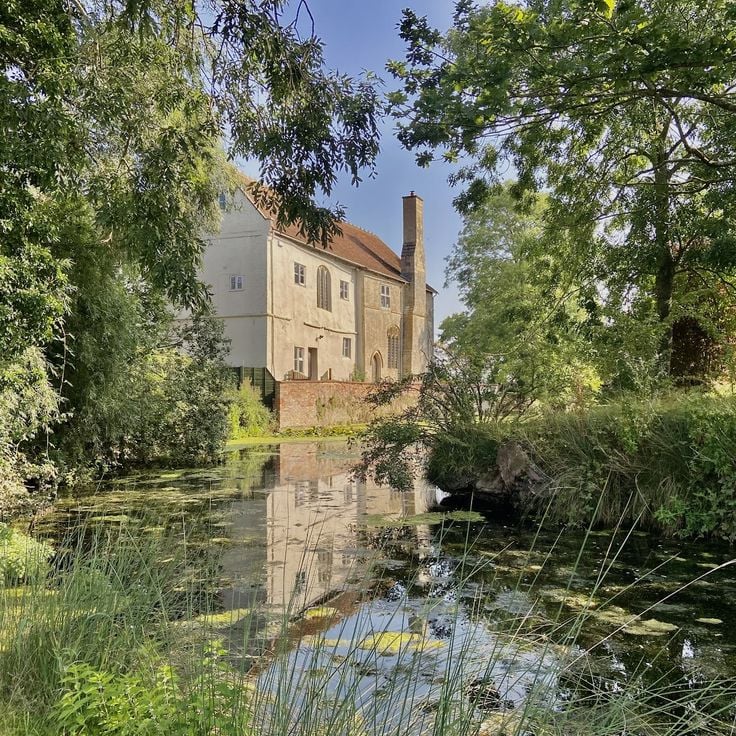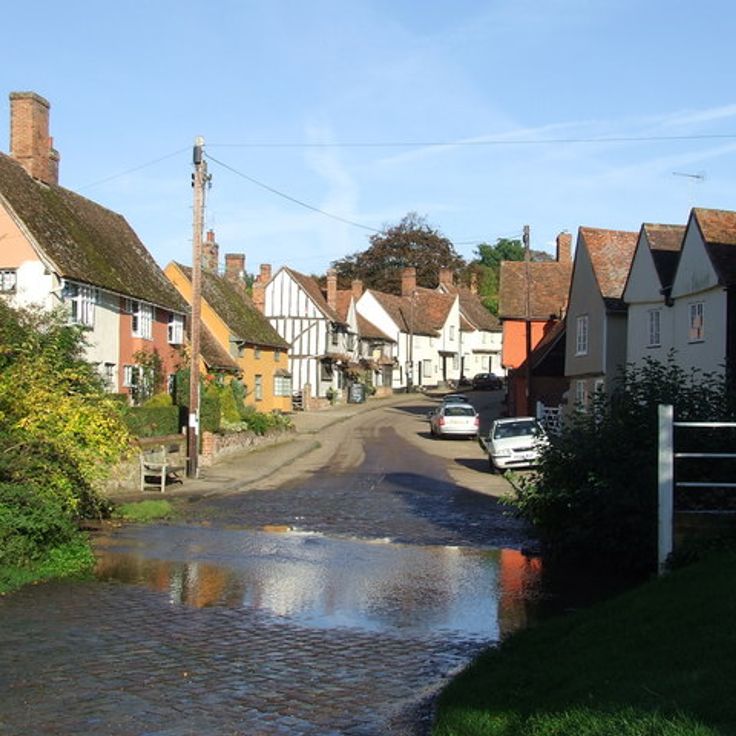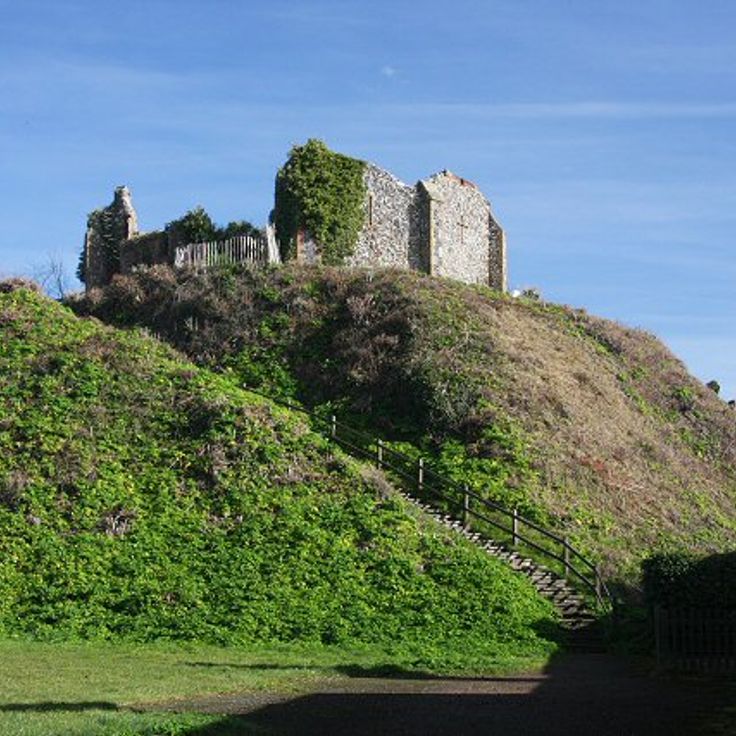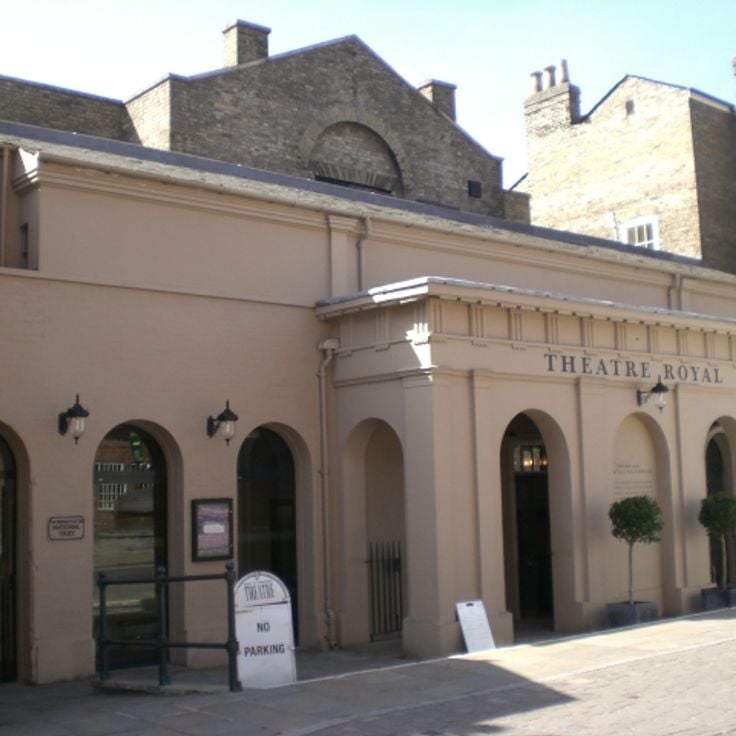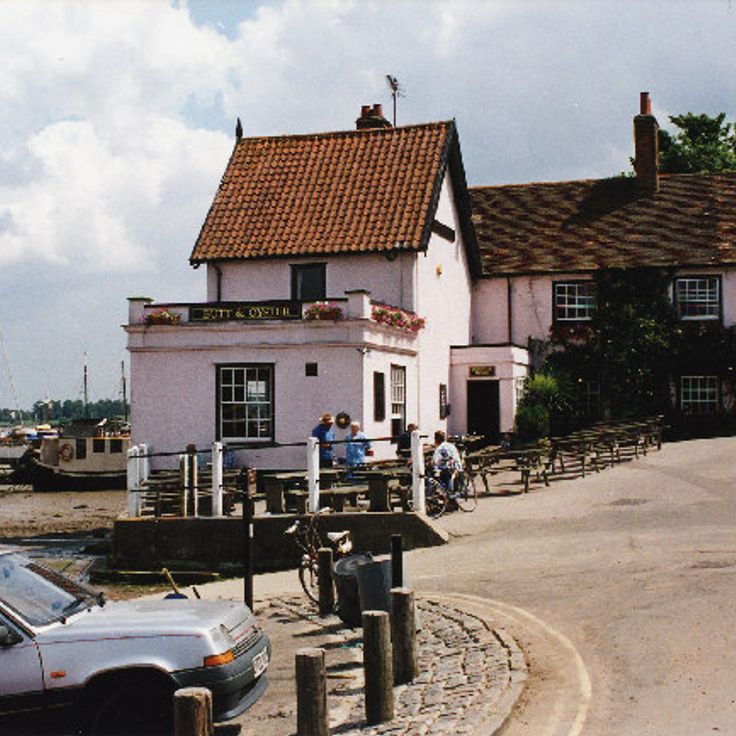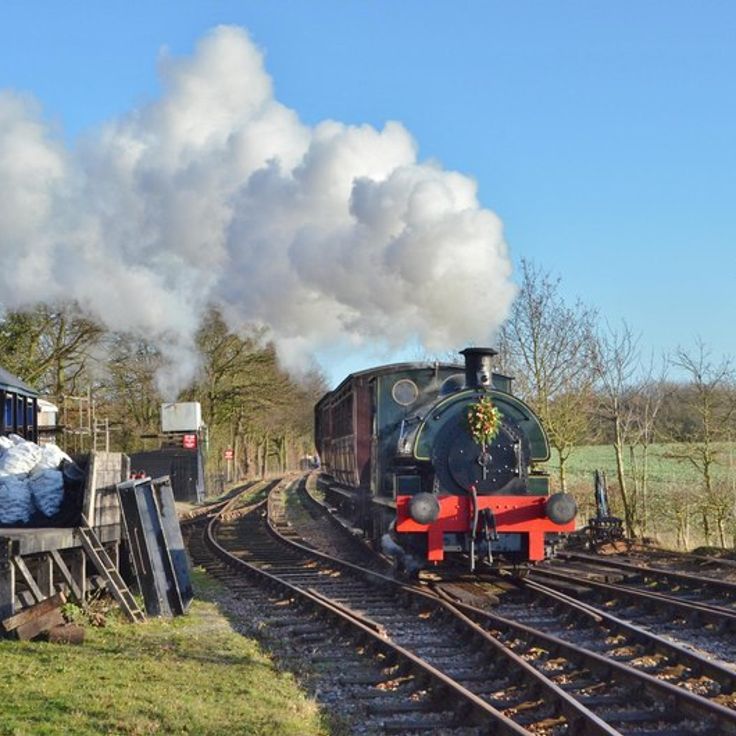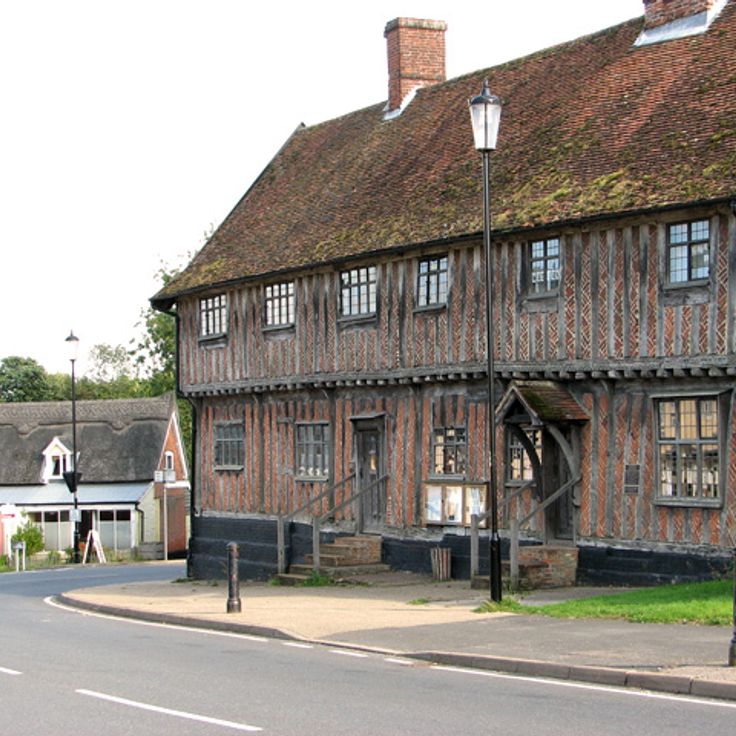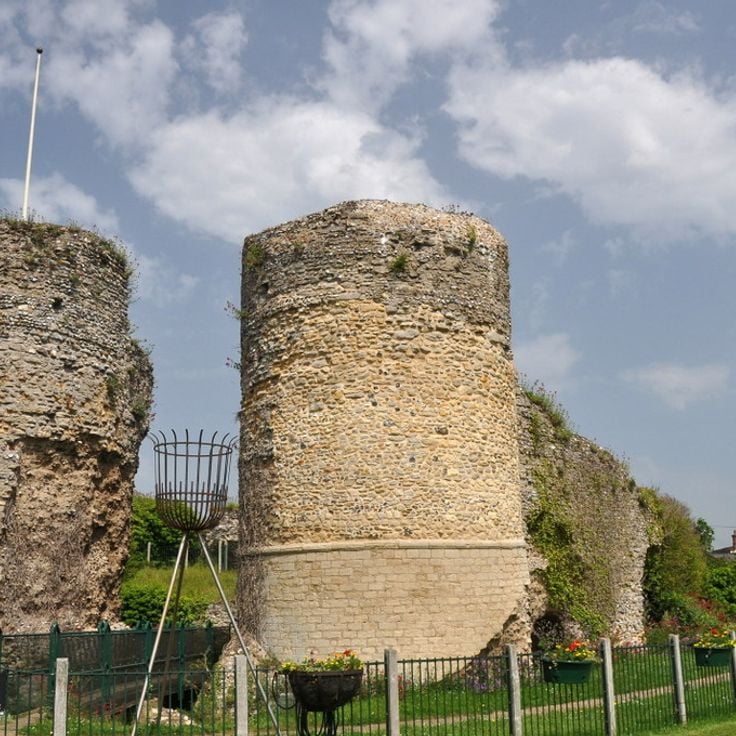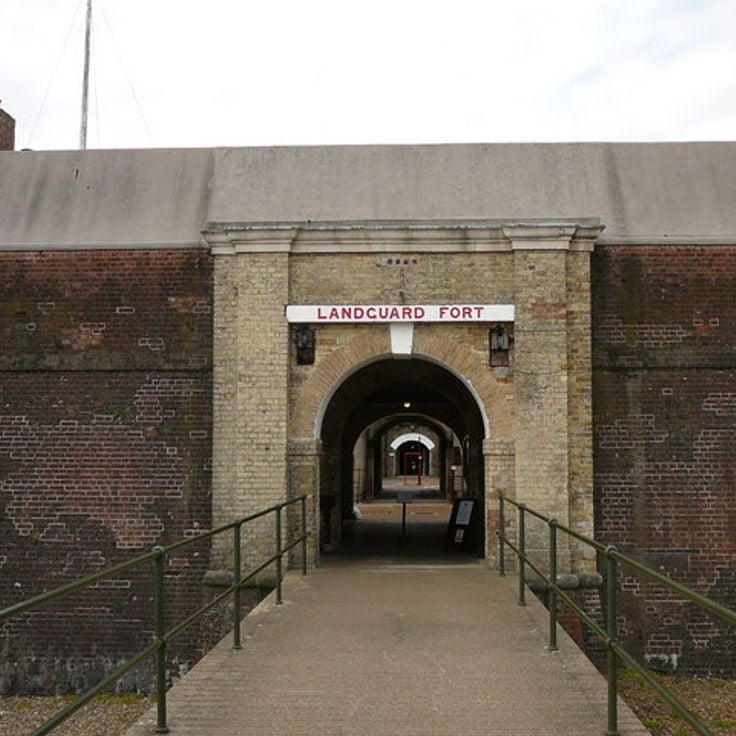Suffolk encompasses a notable array of sites that reflect the history of Britain, from the Middle Ages to World War II. The Norman fortresses of Framlingham and Eye, built in the 12th century, sit alongside Tudor residences like Kentwell Hall in Long Melford, while religious buildings such as St. Edmundsbury Cathedral and Leiston Abbey illustrate the region's medieval architecture. Local museums highlight lesser-known parts of history: Bawdsey Radar Museum documents military research that shaped British defense systems, and the Halesworth Airfield Memorial Museum preserves memories of aerial operations from 1943 to 1945. The Suffolk coast offers a variety of natural and heritage landscapes. Dunwich Heath features heathlands and beaches suitable for birdwatching, whereas sites like Pin Mill and Landguard Fort recall the maritime and defensive roles of this coast facing the North Sea. John Constable’s paintings have immortalized places like Flatford Mill in East Bergholt, shaping the visual identity of this English landscape. Estates such as Ickworth House in Bury St Edmunds and Easton Farm complete this panorama, revealing Georgian lifestyles and traditional agricultural practices of the county.
Bawdsey Radar Museum occupies a former military research facility from 1936 where the first practical air defense radar systems were developed. The museum displays original equipment, technical documents, and photographs documenting the development of radar technology during World War II. Exhibitions explain the scientific principles of radio detection and ranging and their application in early warning systems. Visitors can tour the historical rooms where scientists and engineers worked on the prototypes. The building stands on the Suffolk coast and was part of Britain's air defense strategy.
Framlingham Castle was built in the 12th century as a stone fortification with thirteen towers connected by a continuous defensive curtain wall. The inner courtyard buildings display Tudor architectural features from the 16th century. The castle served as a residence for various English noble families and played a military role during the Wars of the Roses. Views of the Suffolk countryside extend from the walls.
The Dunwich Heath Coastal Centre preserves a section of the Suffolk coastline with expansive heathland that turns purple in late summer. Sandy beaches stretch along the North Sea, offering access points for walks by the water. The area hosts various bird species, including migratory birds during spring and autumn. A visitor centre provides information about local flora and fauna, as well as coastal erosion in this region.
This museum occupies the former control tower of Halesworth Airfield, which operated as a United States Army Air Force base between 1943 and 1945. The collection documents the history of the 489th Bombardment Group and displays uniforms, navigation instruments, aircraft components, and personal items belonging to the aircrews. Photographs and military records illustrate daily operations at the base and the missions flown by B-24 Liberator bombers over Europe during the Second World War.
Leiston Abbey was founded in 1182 and is located in Suffolk. This monastic complex belonged to the Premonstratensian order and displays the remains of a 12th-century religious establishment. The ruins include sections of the church with its stone walls, a vaulted sacristy, and the surviving structures of the cloister and chapter house. The site documents religious architecture from medieval England and provides insight into monastic life during this period.
Ickworth House was commissioned by Frederick Hervey, 4th Earl of Bristol and Bishop of Derry, combining classical architecture with an unusual oval rotunda as its central feature. The rotunda is flanked by two curved wings housing living quarters and galleries. Inside, the collection includes Old Master paintings, Georgian silver and 18th-century French furniture gathered during the Hervey family's European travels. The extensive parkland was designed by Capability Brown and features formal Italian gardens with terraces, sculptures and fountains, alongside woodland walks through the surrounding estate.
Easton Farm provides visitors with opportunities to encounter farm animals including sheep, pigs and horses. The site presents traditional farming techniques through practical demonstrations and hosts regular seasonal events for families and school groups.
Saint-Edmundsbury Cathedral was built as a parish church in the 16th century and became a cathedral in 1914. The building combines Norman architectural elements with later additions. The central tower was completed in 2005 and rises to 46 meters. Inside, the cathedral features medieval wooden ceilings and stained glass windows from various periods. The cathedral serves as the seat of the Bishop of St Edmundsbury and Ipswich.
Kentwell Hall was built around 1500 in the Tudor style and contains authentic furniture from that period. The manor organizes historical reenactments throughout the year, allowing visitors to experience daily life in Tudor England. The interior rooms display original wood paneling, tapestries, and household items. The surrounding estate includes restored gardens in the 16th-century style, a walled vegetable garden, and an orchard with historical fruit varieties.
This water mill from the 1700s stands on River Stour in East Bergholt and appears in several paintings by John Constable depicting rural English landscapes. Within the context of Suffolk's historical sites, Flatford Mill demonstrates how artworks have shaped the visual identity of this region, extending its significance beyond architecture into art history.
Southwold Pier extends 190 metres into the North Sea, offering visitors a range of attractions. The wooden structure houses vintage-style slot machines and entertainment devices, several dining establishments, and observation points for watching marine activity. The original pier opened in 1900 but suffered significant damage during a 1934 storm. After decades of decline, a comprehensive restoration in the late 1990s returned the pier to its current form.
Moyses Hall Museum occupies a Norman stone building dating from 1180 in the centre of Bury St Edmunds. The collections include archaeological finds from the Suffolk region, medieval manuscripts and documents, and objects relating to local history. The museum organises temporary exhibitions on various subjects concerning the county. The rooms display the original architecture with vaulted ceilings and stone walls. The building itself is considered one of the oldest surviving domestic structures in England and documents Norman construction methods of the 12th century.
Christchurch Park spans 33 hectares in central Ipswich and surrounds Christchurch Mansion, a Tudor house dating from the 16th century. The park features maintained lawns, woodland areas, and several ponds. Visitors will find tennis courts, bowling greens, and a children's playground. The grounds serve as a recreational space for walking, sports, and picnics. The historic mansion houses art collections and exhibitions on local history.
Helmingham Hall Gardens surround a 16th-century Tudor manor house and present various themed sections. The rose gardens contain over 3,000 rose plants arranged in multiple beds. The kitchen garden supplies vegetables and herbs, while the formal parterre displays geometric plantings. The historic orchard preserves traditional apple and pear varieties. The borders are planted seasonally and offer changing color combinations from spring through autumn.
West Stow Anglo-Saxon Village features seven reconstructed buildings from the period between 420 and 650 AD on the site of an actual archaeological excavation. This location allows visitors to experience the daily reality of early Anglo-Saxon settlers in East Anglia through authentic replicas of dwellings and workshops. The museum displays archaeological finds from the excavations and offers regular demonstrations of traditional craft techniques.
The Ancient House in Clare displays characteristic 14th-century construction techniques with its original timber frame dating from 1350. The facade features elaborate pargeting decoration, a traditional ornamental plasterwork technique showing geometric and floral patterns. Inside, carved wooden elements and preserved medieval structural details document the craftsmanship of period builders. This building serves as an architectural record of medieval domestic architecture in Suffolk and illustrates the development of timber construction methods in England during the late Middle Ages.
The Thorpeness Windmill was constructed in 1923 as a functional structure to supply water to the village. The building reaches a height of 21 metres and contains five floors connected by an internal staircase. The original milling machinery and mechanisms remain preserved. The location sits close to the Suffolk coastline. The architecture follows traditional windmill design with characteristic sails and timber construction.
Covehithe Beach stretches along a coastline marked by continuous erosion. The cliffs lose several meters of land annually, causing trees to fall onto the sand and creating a landscape in constant transformation. Access to the beach requires a walk of approximately 1.6 kilometers from the nearest car park. This coastline represents one of the fastest eroding sections in Europe and provides insights into active geological processes.
St Peter's Brewery produces beer in a medieval hall dating from 1280, surrounded by water channels. The brewery uses traditional methods and local ingredients for its various beer styles. Visitors can walk through the production areas, observe the brewing process, and taste several beer varieties afterwards. The historic hall provides insight into 13th-century agricultural architecture.
Kersey village was established in the 12th century and retains numerous timber-framed houses along its streets. The main street passes through a ford where water crosses the road. The local church preserves medieval wall paintings from various periods. Kersey developed through wool production and gave its name to a type of coarse woollen cloth. The historic buildings date mainly from the 14th to 16th centuries and document the economic importance of the settlement during the Middle Ages.
Eye Castle was built in the 11th century by the Normans and consists of a motte with an attached bailey. The stone walls of this fortification rise above the small town of Eye and offer wide views across the agricultural Suffolk countryside. The structure belongs to the early Norman fortifications constructed after the 1066 conquest of England to secure territorial control.
The Theatre Royal opened in 1819 during the Regency period and continues to operate as a working theatre today. The building has retained its original architectural features, including the early 19th-century stage, side boxes, and the distinctive auditorium layout. The theatre hosts regular performances of drama, music, and comedy.
Pin Mill sits on the banks of the River Orwell and hosts a community of sailors and traditional wooden sailing barges. The village features a historic pub that has served mariners for centuries, along with boatyards and moorings along the waterfront. The settlement developed as a port for cargo vessels and now serves as an anchorage for classic sailing craft. The area around Pin Mill provides access to riverside paths and views across the estuary.
Somerleyton Hall was remodeled in the 19th century in Jacobean style and displays opulently furnished rooms with period furniture, paintings, and wood carvings. The estate includes a yew hedge maze dating from 1846 and Victorian glasshouses containing exotic plants. The library features carved oak paneling and a collection of first edition books.
The Mid-Suffolk Light Railway Museum preserves the history of the narrow-gauge railway that operated through rural Suffolk between 1904 and 1952. The museum displays restored steam locomotives, passenger carriages and freight wagons from the railway's operating period. Visitors can ride on historic trains along a preserved section of track and tour the workshops where restoration work takes place. The collection includes signaling equipment, station fixtures and documents relating to the region's railway history.
The Laxfield and District Museum documents rural life in Suffolk through a collection of photographs, agricultural tools and documents from the 19th and 20th centuries. The exhibition displays items from local farms, homes and businesses. The museum is housed in a historic building in the village centre and provides insights into the social and economic development of the region.
Bungay Castle was built in 1100 by Roger Bigod as a Norman fortress. The site features two massive towers and thick stone walls characteristic of Norman military architecture. Today, visitors can explore the ruins and learn about the medieval history of the fortress and its strategic importance in the Suffolk region through information panels.
Fort Landguard was constructed in 1540 to defend the harbour entrance and protected the English coast for over four centuries. The fortification now houses military exhibitions featuring historical weapons, uniforms and documents from different periods. Visitors can explore the underground passages that once connected soldiers and ammunition stores, as well as view the preserved artillery positions. The site remained an active military post until 1956, monitoring shipping routes in the North Sea.
